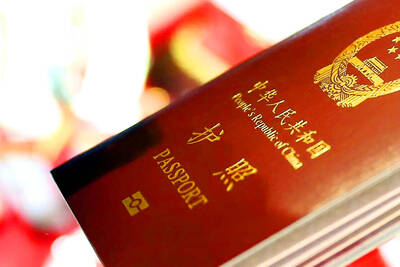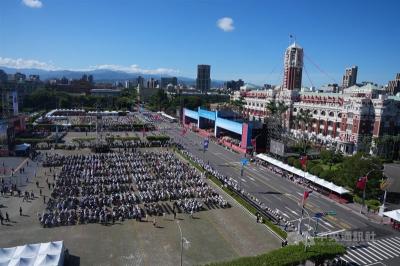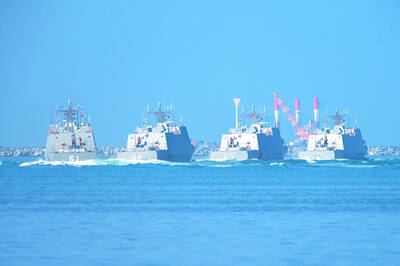The wreckage of a German ship believed to have sunk the HMAS Sydney during World War II has been found off the Western Australian coast, raising hopes that an enduring wartime mystery will soon be solved.
Australian Prime Minister Kevin Rudd said the German merchant raider Kormoran was found on Saturday about 150km west of Shark Bay, which is near the state's westernmost point.
He said the discovery was an important clue to concluding the search for the cruiser HMAS Sydney, which went down in November 1941 with the loss of all 645 on board after a fierce battle.
"We are one step closer as a nation to hopefully finding Sydney," Rudd told journalists at the Australian War Memorial in Canberra.
The Sydney was sunk in battle with the Kormoran while sailing home to Australia from Sumatra in November 1941, but the exact location of the wreck in the vast Indian Ocean was uncertain.
"All of us concerned about this great ship and those of us who are concerned about what happened to the 645 brave souls who went down with her, have all these years been wondering where she lay and what in the end actually happened," Rudd said.
The Kormoran was also sunk but most of the German vessel's crew of 397 survived and were able to give accounts of what had occurred.
Intrigue has sparked several major hunts, the latest being the Finding Sydney Foundation's largely government-funded search using sonar equipment which began early this month.
The foundation said the Kormoran wreck was several pieces of hull amid a large and dense field of debris lying some 2,560m underwater.
"The wreckage fits perfectly with what we know and expected to see for Kormoran from testimony of the German survivors," search director David Mearns said in a statement.
Searchers believe the site of the battle is about 4 nautical miles (2.4km) south of the Kormoran wreck site because this is where more scattered debris -- likely to have come from the Sydney after she was gravely damaged by a torpedo hit and being heavily shelled -- has been found.
The team will now narrow the area they are searching to within 300 nautical miles of the Kormoran and this week will use a remote-operated vehicle to search the Kormoran and the battlefield.
Chairman of the foundation Ted Graham said finding the Kormoran put searchers "halfway to solving where the Sydney is."
"Without finding the Kormoran, our job would've been much harder," Graham said.
"It's a fantastic step forward," he said.
Navy chief Vice Admiral Russ Shalders said the find would "allow us to proceed towards finishing something that has been a mystery -- Australia's major maritime mystery."
"The navy looks forward to the day that we can find the Sydney and perhaps more importantly find out why the battle turned out the way it did," he said.
Germany has been told that the HSK Kormoran had been found and that authorities were working to ensure the site was protected.

The Ministry of the Interior (MOI) is to tighten rules for candidates running for public office, requiring them to declare that they do not hold a Chinese household registration or passport, and that they possess no other foreign citizenship. The requirement was set out in a draft amendment to the Enforcement Rules of the Public Officials Election and Recall Act (公職人員選舉罷免法 ) released by the ministry on Thursday. Under the proposal, candidates would need to make the declaration when submitting their registration forms, which would be published in the official election bulletin. The move follows the removal of several elected officials who were

The Republic of China (ROC) is celebrating its 114th Double Ten National Day today, featuring military parades and a variety of performances and speeches in front of the Presidential Office in Taipei. The Taiwan Taiko Association opened the celebrations with a 100-drummer performance, including young percussionists. As per tradition, an air force Mirage 2000 fighter jet flew over the Presidential Office as a part of the performance. The Honor Guards of the ROC and its marching band also heralded in a military parade. Students from Taichung's Shin Min High School then followed with a colorful performance using floral imagery to represent Taiwan's alternate name

FOUR DESIGNATED AREAS: Notices were issued for live-fire exercises in waters south and northwest of Penghu, northeast of Keelung and west of Kaohsiung, they said The military is planning three major annual exercises across the army, navy and air force this month, with the navy’s “Hai Chiang” (海強, “Sea Strong”) drills running from today through Thursday, the Ministry of National Defense said yesterday. The Hai Chiang exercise, which is to take place in waters surrounding Taiwan, would feature P-3C Orion maritime patrol aircraft and S-70C anti-submarine helicopters, the ministry said, adding that the drills aim to bolster the nation’s offshore defensive capabilities. China has intensified military and psychological pressure against Taiwan, repeatedly sending warplanes and vessels into areas near the nation’s air defense identification zone and across

COVETED PRIZE: The US president would be a peace prize laureate should he persuade Xi Jinping to abandon military aggression against Taiwan, William Lai said US President Donald Trump should get the Nobel Peace Prize should he be able to convince Chinese President Xi Jinping (習近平) to abandon the use of force against Taiwan, President William Lai (賴清德) told a conservative US radio show and podcast in an interview. The US is Taiwan’s most important international backer, despite the absence of formal ties, but since Trump took office earlier this year he has not announced any new arms sales to the nation. Trump could meet Xi at the APEC summit in South Korea on Oct. 31 and Nov. 1. Lai, speaking on The Clay Travis and Buck Sexton